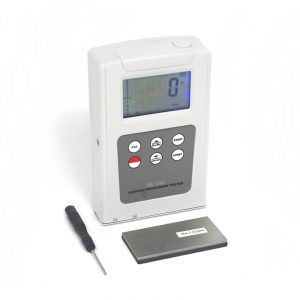Influência da rugosidade superficial das peças
No processo de design da peça, vários fatores são geralmente considerados, como o desempenho de uso do produto, assembly performance, etc., to ensure that the part can meet its design purpose. No entanto, the potential influence of this parameter on the coating quality is often ignored when determining the index of the surface roughness of the parts. This paper will discuss the influence of part surface roughness on plating quality and why this factor should be taken seriously.

Influência da rugosidade superficial das peças
1. Surface roughness and polishing effect
The surface roughness of the part has a significant influence on the final polishing effect during the subsequent treatment such as electric polishing or chemical polishing. Em geral, if the surface roughness of the part is low before treatment, then after polishing, the reduction of the surface roughness will be more obvious. This means that by controlling the initial surface roughness of the part, the desired smooth surface can be achieved more easily.
2. Surface roughness and plating quality
For the coating with porosity quality index, the surface roughness of the part before plating is very important to obtain the coating without porosity. Lower surface roughness can reduce the porosity in the coating, making it more dense. Pelo contrário, if the surface roughness of the part is high, even if the thickness of the plating layer is increased, it is sometimes difficult to obtain a non-porous plating layer.
Além disso, the greater the roughness of the surface of the part, the greater the deviation between the actual area of the coated surface and the theoretical calculation area. This means that under the same current, the time required for the plating layer of the part to reach the same average thickness will depend on the surface roughness. A part with a small surface roughness will form a coating of the same thickness faster than a part with a larger surface roughness.
3. Surface roughness and coating uniformity
When the parts have deep concave parts such as internal holes and internal threads, the increase of surface roughness will not only reduce the plating speed, but also significantly affect the uniformity of the coating in the deep concave parts. The high surface roughness limits the depth of coating in deep concave parts, which affects the uniformity of coating.
Influência da rugosidade superficial das peças
4. Surface roughness and appearance and corrosion resistance
The increased roughness of the part surface can also negatively affect the appearance and corrosion resistance of the plated layer. Parts with higher surface roughness generally have a poor appearance, and their coatings may be more susceptible to erosion and corrosion by environmental factors, reducing their corrosion resistance.
5. Conclusions and Suggestions
Unless the surface roughness of the part has special requirements for the performance of the product, the surface roughness of the part before plating should be reduced as much as possible. Practice has proved that the use of profiles with high surface quality, precision forming technology to manufacture parts of the blank, and reduce the roughness of the cutting surface can significantly improve the quality of the coating layer on the surface of the parts, reduce the generation of unqualified products, and reduce the total manufacturing cost of parts. Portanto, designers and manufacturing process personnel should jointly recognize the importance of part surface roughness for plating quality to ensure the performance and reliability of the final product.
